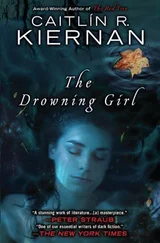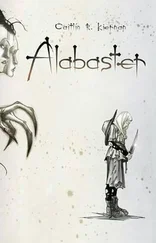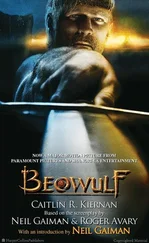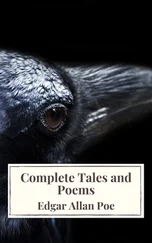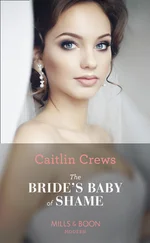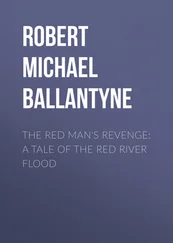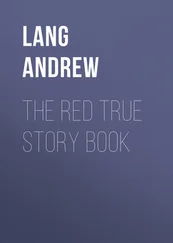Caitlin R. Kiernan - The Red Tree
Здесь есть возможность читать онлайн «Caitlin R. Kiernan - The Red Tree» весь текст электронной книги совершенно бесплатно (целиком полную версию без сокращений). В некоторых случаях можно слушать аудио, скачать через торрент в формате fb2 и присутствует краткое содержание. Жанр: Ужасы и Мистика, на английском языке. Описание произведения, (предисловие) а так же отзывы посетителей доступны на портале библиотеки ЛибКат.
- Название:The Red Tree
- Автор:
- Жанр:
- Год:неизвестен
- ISBN:нет данных
- Рейтинг книги:3 / 5. Голосов: 1
-
Избранное:Добавить в избранное
- Отзывы:
-
Ваша оценка:
- 60
- 1
- 2
- 3
- 4
- 5
The Red Tree: краткое содержание, описание и аннотация
Предлагаем к чтению аннотацию, описание, краткое содержание или предисловие (зависит от того, что написал сам автор книги «The Red Tree»). Если вы не нашли необходимую информацию о книге — напишите в комментариях, мы постараемся отыскать её.
The Red Tree — читать онлайн бесплатно полную книгу (весь текст) целиком
Ниже представлен текст книги, разбитый по страницам. Система сохранения места последней прочитанной страницы, позволяет с удобством читать онлайн бесплатно книгу «The Red Tree», без необходимости каждый раз заново искать на чём Вы остановились. Поставьте закладку, и сможете в любой момент перейти на страницу, на которой закончили чтение.
Интервал:
Закладка:
I am not, by the way, recounting these lines from memory. I would never have remembered a third of them. There was (too conveniently, I thought) a stenographer’s pad lying open on one of the windowsills, and a sharpened No. 2 pencil. Both were partly hidden beneath the oak leaves, but when I happened to spot them — halfway through the canvases — I backtracked and copied the text into the notepad. It’s lying here on the dressing table beside the typewriter.
The strip of paper affixed to the third canvas read, “Angels. Hordes upon hordes of them.”
I lingered, reading that line aloud several times, not wanting to proceed to the fourth, and my mind drew connections that were or were not there to be drawn.
There were doors all round the hall, but they were all locked; and when Alice had been all the way down one side and up the other, trying every door, she walked sadly down the middle, wondering how she was ever to get out again.
At the fourth easel, which was set up in front of the south-facing dormer, was a scrap of newsprint reading, “Or the loves of the worlds. The call they feel for one another. They try to move closer and howl when they get there.” The fifth canvas was placed so that it faced the wall, and I had to turn the easel about myself to read what had been tacked to it: “I have seen two of the carcasses, myself, and can say definitely that it is impossible for it to be the work of a dog. Dogs are not vampires, and do not suck the blood of a sheep, and leave the flesh almost untouched.” Among the bits of paper on the canvases, this one is conspicuous, not only for being the most wordy, but also because someone had bothered to note its source. Written in sepia-colored ink in a spidery hand, I read, “ London Daily Mail, Nov. 1, 1905.”
Five down.
The birds are still singing, and I find their voices an odd comfort. But, right now, I’d give four fingers off my right hand for a cigarette and a cold beer. Sweat keeps running into my eyes. It must be at least eighty-five in this room. Eight-five or ninety, easy. I am waiting for a careless spark, and the oxygen in the air will instantly combust, and everything in the bedroom will mercifully be scorched to a cinder.
The sixth easel was on the far side of the air mattress, near a tiny dresser holding most of Constance’s clothes. I checked the drawers; her T-shirts and underwear and sweaters and socks were all still there, though the drawers were also stuffed with oak leaves. The sixth strip of newsprint read, “I can draw no line between imposture and self-deception.”
Which brings us to the end of this taut length of green fishing line, or to the point where Alice finally reached the bottom of her deep well. Seven. The final easel was standing a foot or two from the north dormer window. Before reading the piece of newspaper tacked to it, I glanced back towards the attic door, and was relieved to see that it had not swung shut. The seventh clipping read simply, “Out in open places there have been flows of a red liquid.” So, there.
And if that were all — these seven canvases and their cryptic commentaries — I would suggest the following: Constance brought the leaves in herself, and placed them all about the room, to frame what she’d conceived of as some bizarre minimalist installation. I hadn’t noticed, but so the hell what. I also hadn’t noticed her leaving the farm, leaving me alone here, but, again, so what. I miss a lot, and the past few days, I expect I might have missed more than usual. If this is where it all ended, I could be satisfied with such an explanation, and I’d not bother with the handful of unanswered questions. But it didn’t end here. I’m not certain, now, that it will ever end.
First, I saw the oak leaves. And then I inspected the seven canvases, each one bearing a single snippet taken from an old book or newspaper. Otherwise, the canvases were naked. And then they weren’t anymore.
Glancing towards the attic door again, and preparing to leave and go back downstairs, I saw that the change had occurred. I didn’t see it happen. That is, I did not catch the canvases in the act of metamorphosing, assuming that’s what they did. I’m trying, hard, to make no assumptions about process, or cause and effect, as I write this out. But assumptions are inevitable. And again, the shock to my senses that I would have expected to accompany such an event failed to take hold of me. I wasn’t horrified. I was not appalled. I didn’t become perceptibly more frightened than I had been before the seven paintings “appeared.”
I’m not even going to try describe all seven of the paintings. I saw them, and, for the most part, that’s sufficient. They were garish, grotesque things. I remember telling Constance that I know very little about paintings and painters, and that’s true. But these brought to mind the works of Francis Bacon, with whom I am familiar because Amanda was somewhat obsessed with him. But I’m certainly not knowledgeable enough to attempt to describe the style. I did look at the Wikipedia article on Bacon before I began writing this (I also checked my email, but there was nothing new there), and the images it included served to confirm my initial impression that the paintings in the attic are reminiscent of his style, especially Three Studies for Figures at the Base of a Crucifixion (1944), Head (1948), and Study After Velázquez’s Portrait of Pope Innocent X (1953) — more notes from the steno pad, by the way. I cannot say that I committed those titles to memory. The Wikipedia article states that Bacon’s “. . artwork is known for its bold, austere, and often grotesque or nightmarish imagery.”
I examined only one of the seven paintings from the attic closely. The last one that I’d come to (though it was blank when I reached it), the one propped on the easel near the north dormer window. The one that had, only moments before, held a strip of paper printed with a single sentence: “Out in open places there have been flows of a red liquid.”
The first thing I looked for was the artist’s signature, expecting to find Constance’s. Instead, in minute white brushstrokes I read “B. Hirsch ’19.” I think that I said her name aloud, then — Bettina Hirsch — the painter that Joseph Olney had fallen in love with during his time in Los Angeles, but who’d hung herself on Christmas Day 1920. The woman that had formed the focus of his mania regarding the red tree. The woman he’d done murder for, an unknown number of times, because he believed that she was being held captive by demons who lived beneath the tree.
As for the subject of the painting, near as I could tell it depicted the mutilated body of a woman, and at the time I thought she was meant to have been attacked and mauled by some sort of animal. I don’t know if that was the intention of the artist. The figure was rendered in shades of yellow, orange, and deep red, and she had been placed against a background that was primarily a dark brownish shade of purple. Eggplant, I suppose, or aubergine. Both the woman’s legs and both her arms were missing, and there were only what I took to be bloody stumps. Her jaw was hanging open, as though frozen in the act of screaming. The paint had been applied very thickly to the canvas, almost caked on in places. In fact, I had the impression that there might have been another, older painting hidden beneath the one I was seeing.
And still, I didn’t feel the chill up my spine or the possum across my grave or death breathing down my neck or whatever it is we are taught people are meant to experience under such conditions. I didn’t scream at the sight of a murdered rabbit. Perhaps, by this time, I was in shock, and maybe I still am. However, I did feel a distinct sense of revulsion. There was no fear to it, no dread. One does not feel afraid looking at crime-scene photos, or roadkill, or something left too long at the back of the refrigerator. Seeing it, I felt the need to wash my hands (though I didn’t touch the painting), more than I felt anything.
Читать дальшеИнтервал:
Закладка:
Похожие книги на «The Red Tree»
Представляем Вашему вниманию похожие книги на «The Red Tree» списком для выбора. Мы отобрали схожую по названию и смыслу литературу в надежде предоставить читателям больше вариантов отыскать новые, интересные, ещё непрочитанные произведения.
Обсуждение, отзывы о книге «The Red Tree» и просто собственные мнения читателей. Оставьте ваши комментарии, напишите, что Вы думаете о произведении, его смысле или главных героях. Укажите что конкретно понравилось, а что нет, и почему Вы так считаете.

